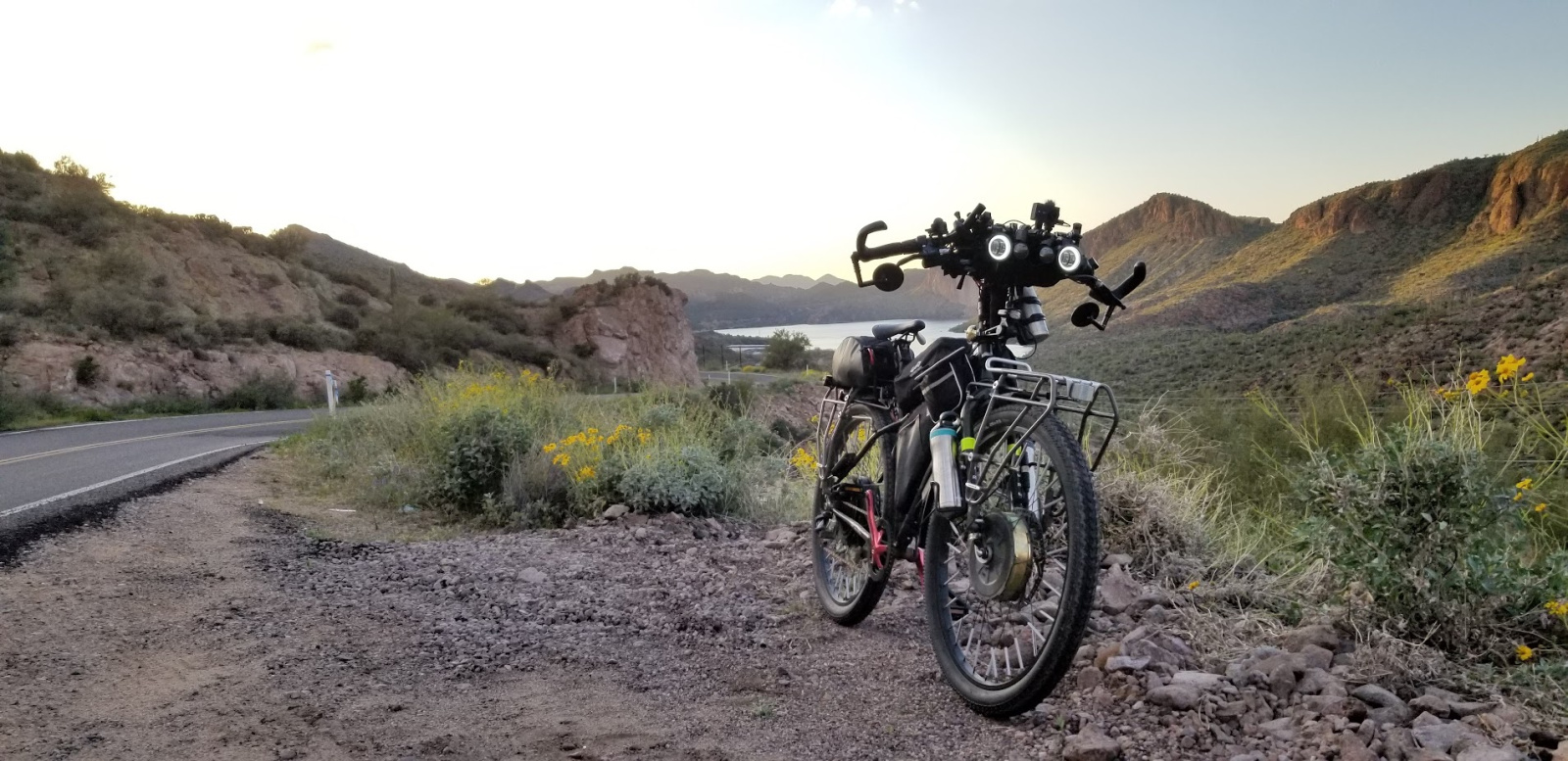The Kitchen Sink (2WD Everything-Bike)
USA
|
572
Published: 2024-05-20
For better and for worse, I set out to build a bike that is EVERYTHING I want out of an ebike, all in one. 2WD, extra-long range, torque sensing PAS, and plenty of cargo space. I don't recommend that most people emulate this build (for reasons I'll get into), but for me it's perfect.
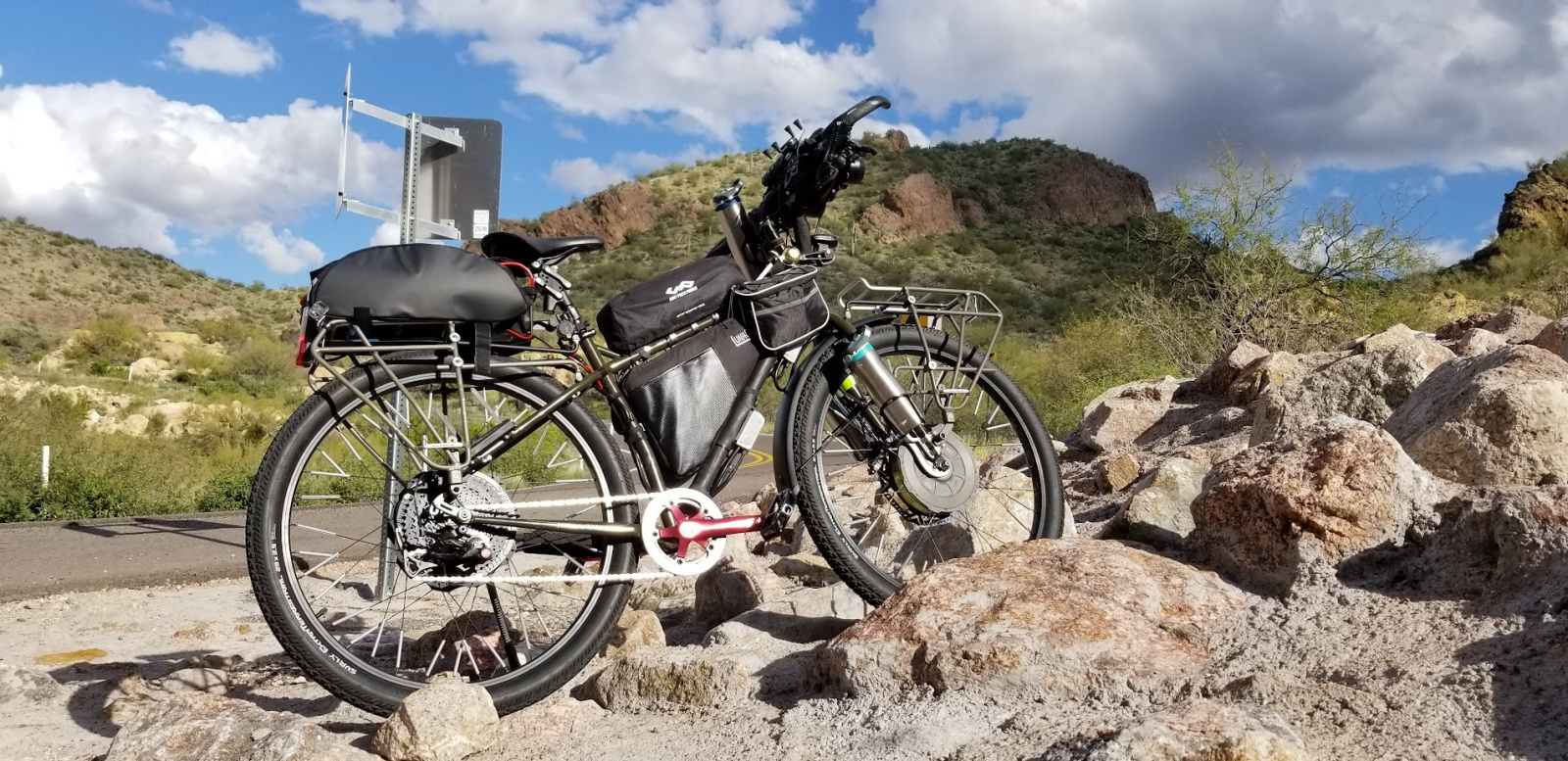
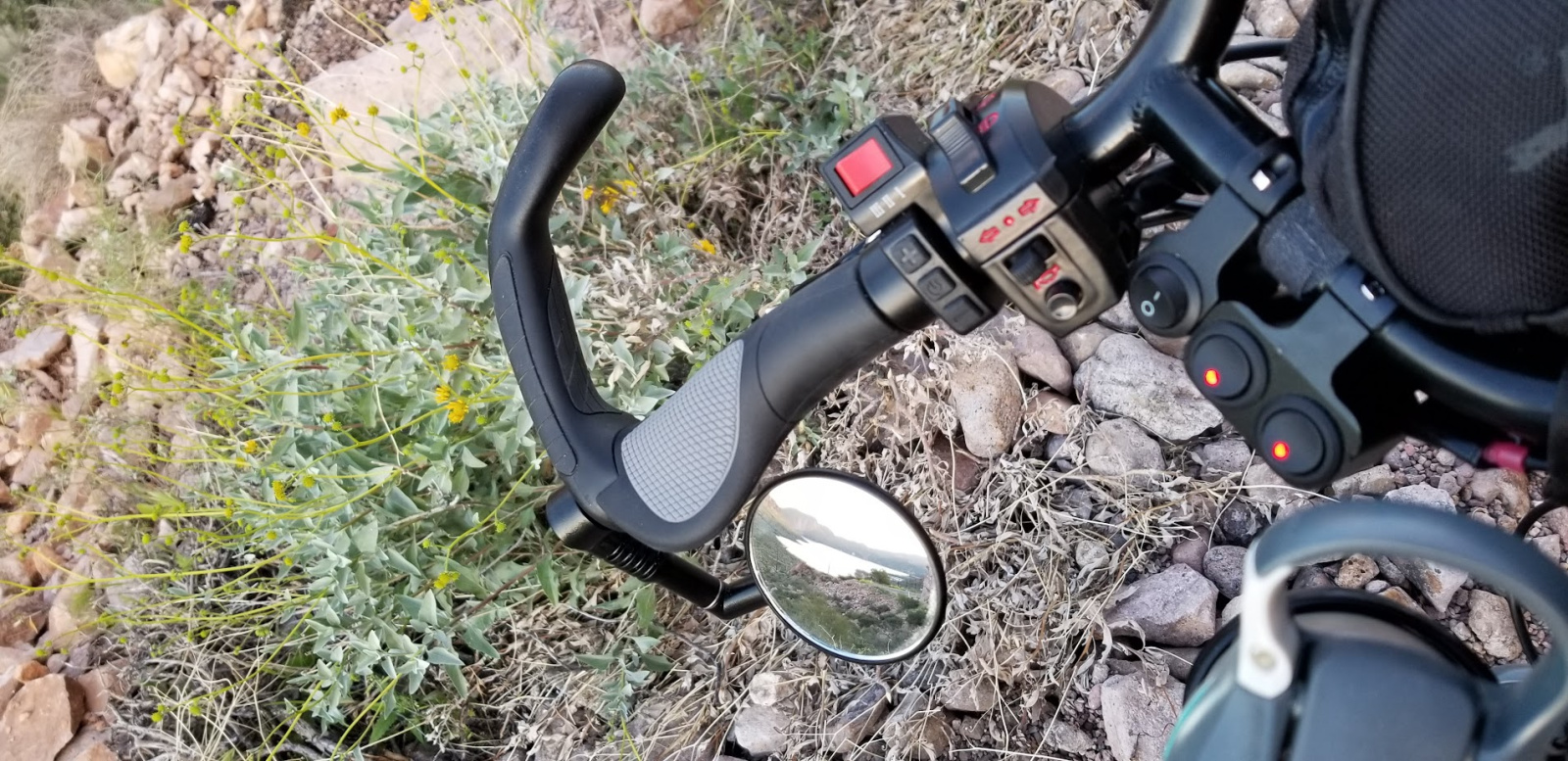
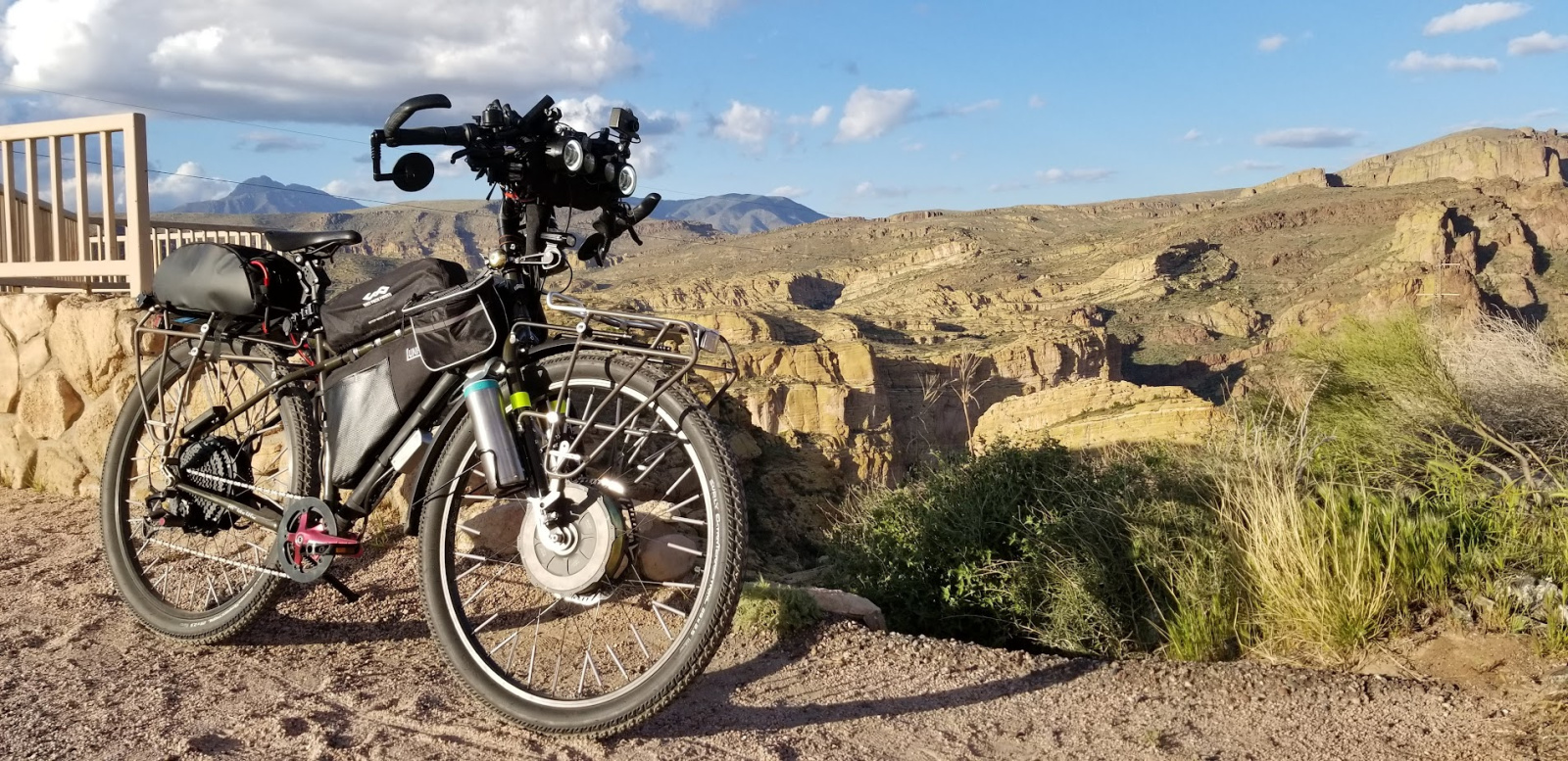

Current Specs Overview
Frame: 2016 Surly ECR
Front Motor: Grin All-Axle
Rear Motor: MXUS 3005RC (My 9C RH212 needs new bearings, and I keep putting it off...)
Batteries:
- 1. EM3ev 14s9p Large Triangle pack, 27.9Ah rated with Samsung 33G cells (purchased 1/2018)
- 2. EM3ev 14s7p Rectangle pack, 21.7Ah rated with Samsung 33G cells (purchased 11/2018)
- 3. EM3ev 14s5p Jumbo Shark pack, 14.8Ah rated with LG HG2 cells (purchased 10/2019)
Controllers: 2x Grin Phaserunner
Display: Cycle Analyst 3
Other Electronics: Full 12v system with low/hi headlights, tail + brake lights, front and rear turn signals, phone/USB and 12v Accessory charging, and (newest addition) a small 12v LiFePO4 pack to serve as a backup supply for the lights as well as a consistent supply for a future alarm system.
Brakes:
- 1. TRP Spyke on the front with a Magura 220mm rotor
- 2. Front + Rear variable regen via the two direct-drive motors and Phaserunner controllers, actuated with an analog output brake lever from a M365 electric scooter.
Derailleur: Box Two-E Prime 9 9sp ebike rear derailleur
Shifter: Archer D1x electronic shifter with button remote
Cassette: 9sp 11-50t for day to day riding, 11sp 11-50t for touring or other high-demand occasions.
Handlebars: Surly Moloko bars
Stem: Kinekt Suspension Stem (3deg, 100mm)
Seatpost: Satori Animaris suspension seatpost
Tires: Surly ExtraTerrestrial 29x2.5" with Tannus Armour inserts
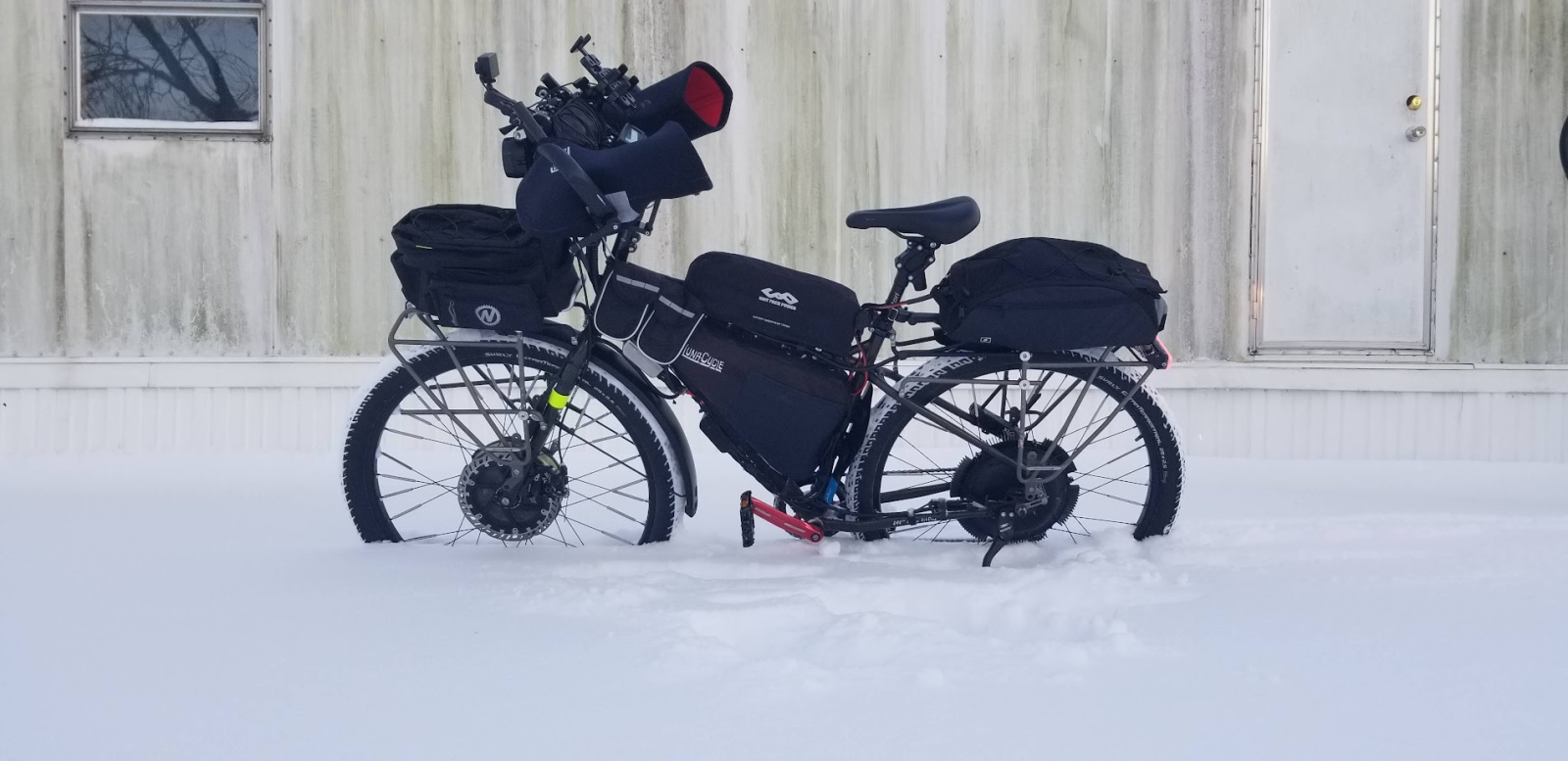
Why did I build it (the way that I did)?
The Kitchen Sink is my 4th DIY ebike build, and my intent was to implement everything I had learned about ebikes, my own feature/component preferences, and my personal ergonomic preferences, into a single bike. Then, during the early planning stages, I hatched a plan for a 1600mi ebike tour from Arizona (where I was living at the time) to Illinois, which ended up being planned for mid-2020. This tour did not happen, for the glaring 2020 reason, but the idea of it guided me as I designed this bike in 2018.
What I wanted this bike to have:
1. I wanted the simplicity, low maintenance, and regen ability of a direct-drive hub (the basis of my first two ebike builds).
2. I wanted the hill-climbing ability of a mid-drive (the basis of my third ebike build).
3. I wanted extreme range, ideally 100mi+ at 20mph under realistic/mixed conditions.
4. I wanted this build to be a BICYCLE. I've got nothing against moto-like builds, but I enjoy pedaling and the overall bicycle experience more than I enjoy the "just throttle and go" experience. I wanted this bike to be as enjoyable to pedal (with assist) as possible, which meant a good drivetrain, good pedaling ergonomics, and responsive pedal-assist.
5. I wanted the bike to be comfortable for back-to-back full days in the saddle, accounting for my own health concerns and pain points.
6. I wanted plenty of on-bike cargo capacity.
6. I wanted ebike-powered lights and accessory charging. No extra batteries to forget to charge before a big ride or nighttime commute.
You may notice that some of these wants are contradictory. So did I, but I am not easily deterred.
For points 1 and 2, I wanted the simplicity, low maintenance, and regen of a direct-drive motor, but I also wanted to climb long steep hills the way a mid-drive can. These two desires are in conflict, and that conflict drove me to my solution: TWO motors! Split the power, split the heat, and climb all the hills without having to replace your chain every 700 miles or so (looking squarely at you, BBS02).
Initially, in an attempt to keep the weight down (yeah right...), I chose a direct-drive MXUS 3005RC rear hub paired with a tiny Bafang G311 geared front hub. This worked well enough on flat ground and mild to moderate hills. Unfortunately, I was definitely exceeding that little geared hub's safe operating temperature on the long, steep desert climbs I so enjoyed, and even then, it couldn't take on enough of the load to keep the MXUS rear hub at safe temps on the worst climbs. So, I swapped to a Grin All-Axle front hub, and that's what I'm still running.
For points 5 and 6, my desire for a robust frame with significant cargo capacity (and compatibility with the direct-drive hubs available at the time) informed my choice of frame, the 2016 Surly ECR. That frame has mount points everywhere, is very strong, and I ride the bike full-time with front and rear racks installed. However, it is a full-rigid frame that I planned to ride on unmaintained pavement and worse, so that plus my desire for comfort led to the suspension stem and seatpost (and hilarious stem riser). They work fantastically and have held up for years - the Satori Animaris seatpost dates back to 2017 and likely has over 10,000 miles on it.
Finally, the concessions necessary to make a bike that does everything stand in clear conflict with point 4 - the desire for a BICYCLE. The Kitchen Sink is many things:
- It is heavy, at 100lb+ in full touring config (before cargo).
- With two direct-drive motors, it's a bit of a bear to pedal unpowered.
- It's unwieldy when trying to get it up a set of stairs or find a place to park.
- It handles like the two-wheeled equivalent of a Dodge Grand Caravan, and it can't fit in one without significant disassembly.
However, I did build a lot of the bicycle experience back into it:
- It has torque-sensing pedal assist
- It has proper pedaling ergonomics, with an Ergon saddle, Wellgo MG-1 pedals, a seatpost long enough for my tall, and a wide gear range to help me maintain reasonable pedaling RPMs in most situations.
- Despite its size and weight, it actually runs pretty well at the 750w US legal limit for electric bicycles.
All told, when riding The Kitchen Sink, it's actually pretty easy to forget that you're atop the two-wheeled equivalent of a Dodge Grand Caravan. So, I call that 'mission accomplished' on the whole "be a bicycle" thing.
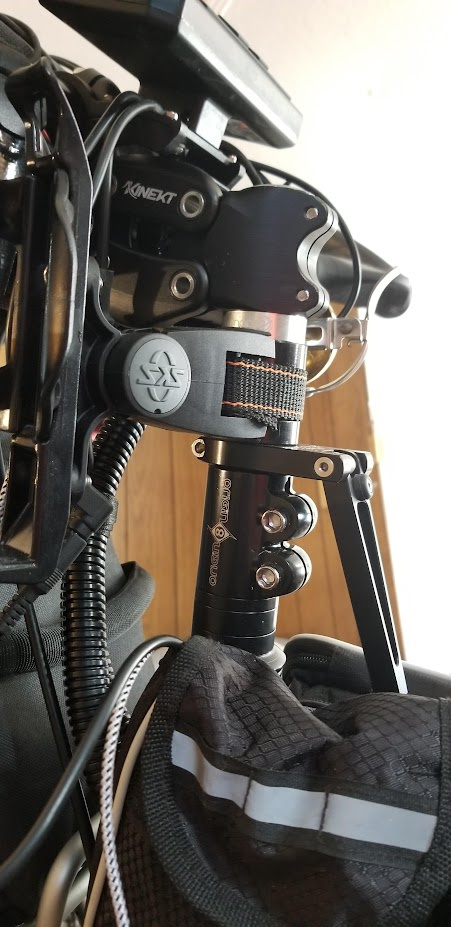
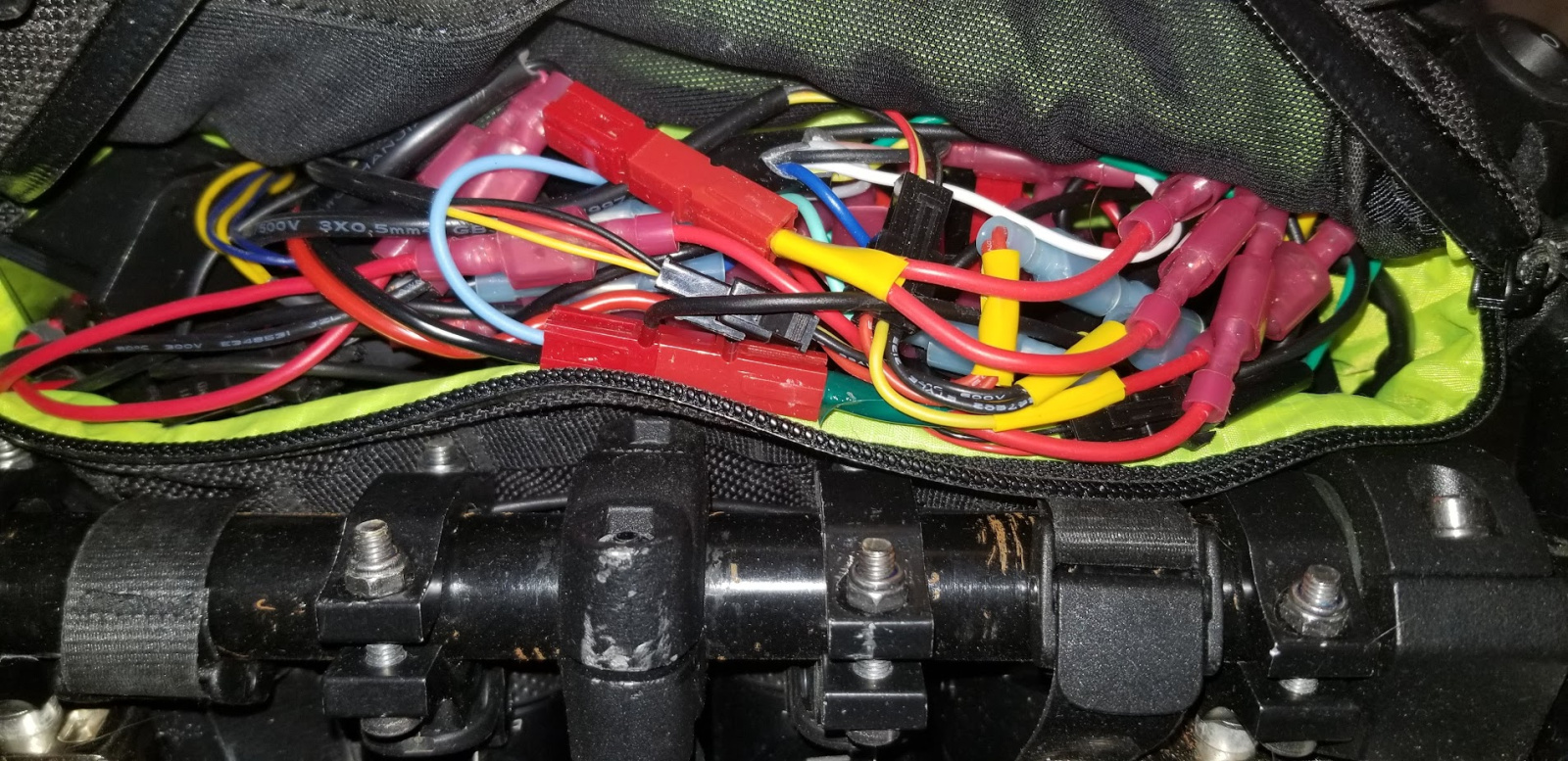

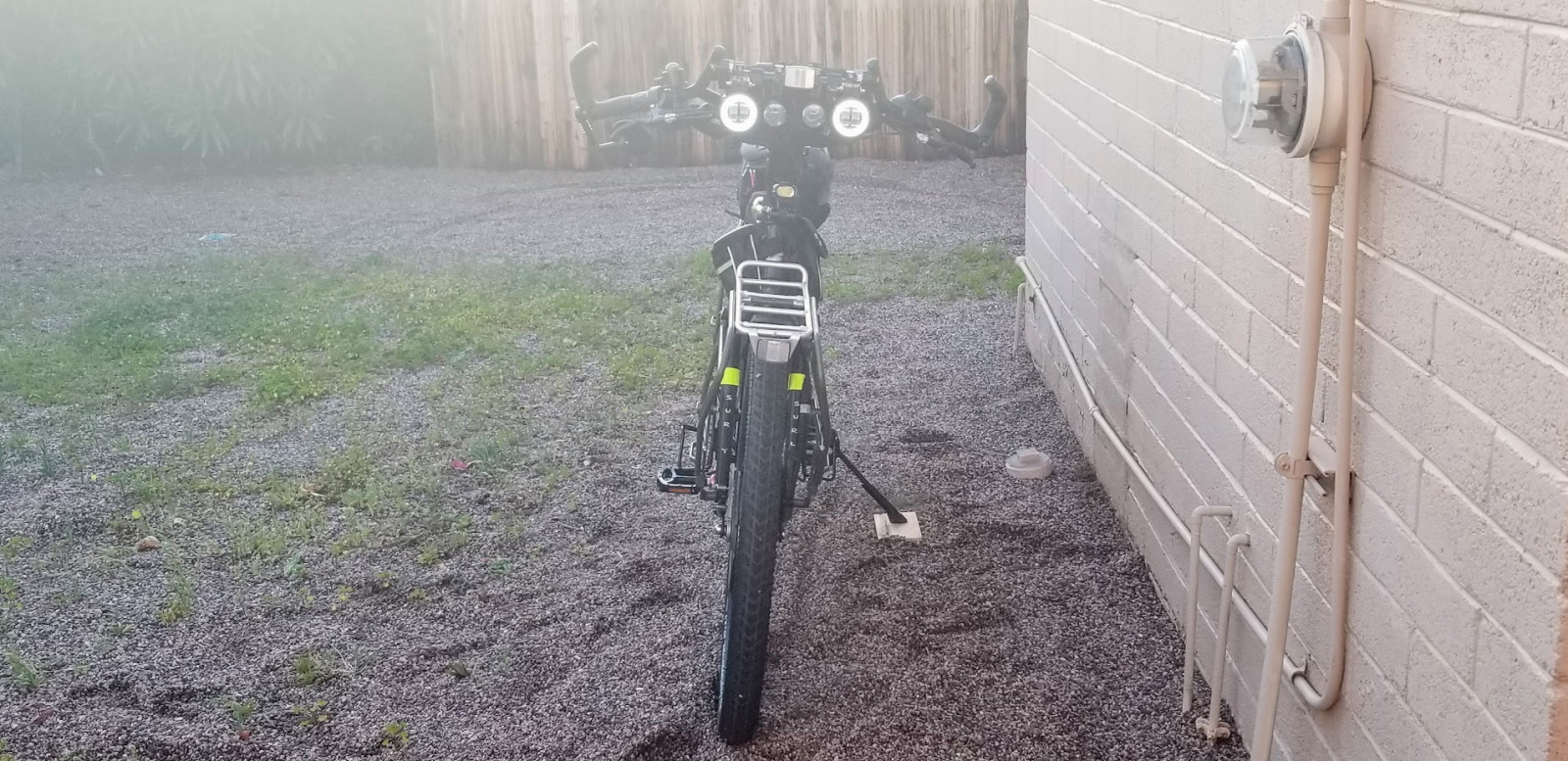
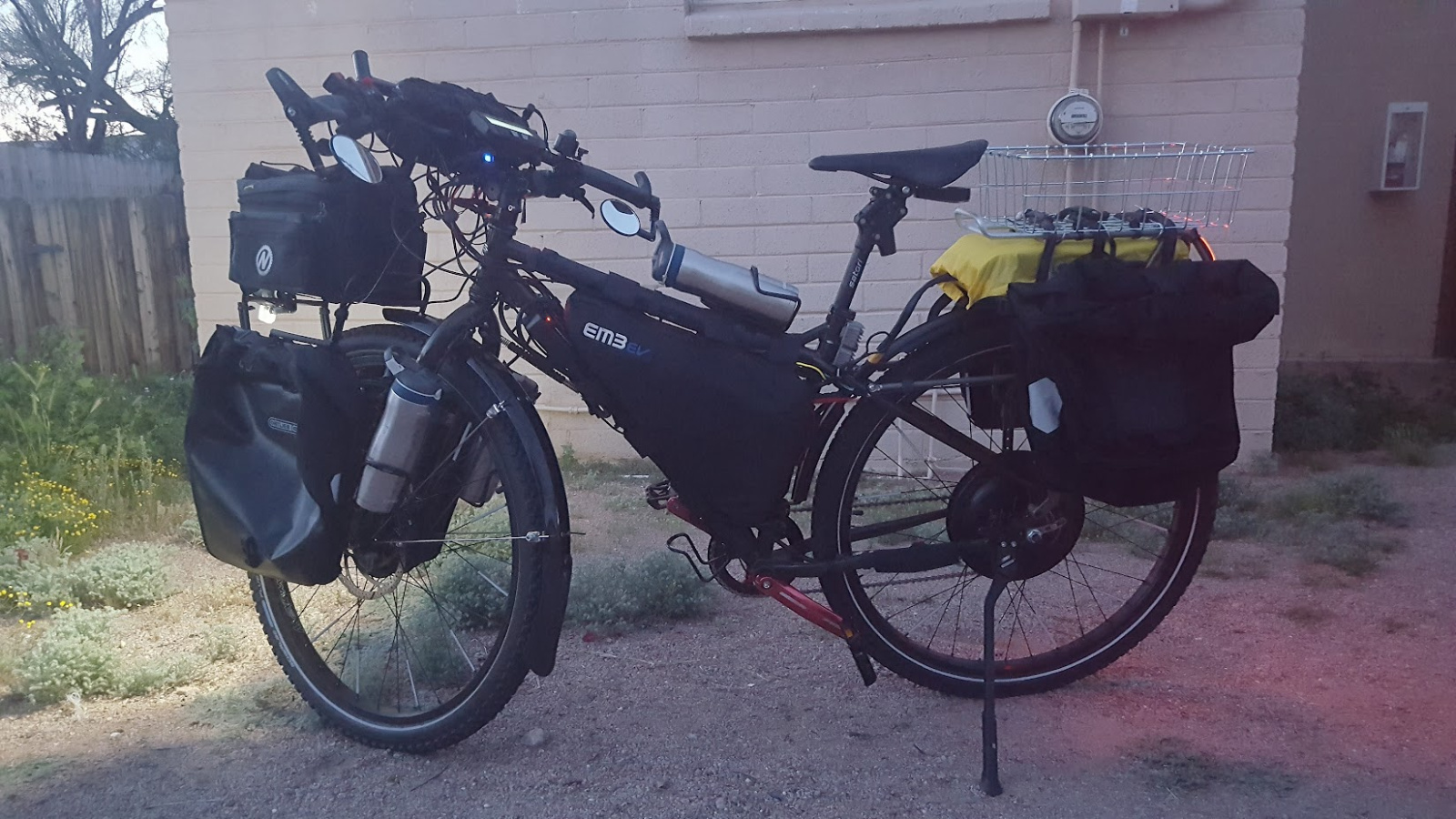
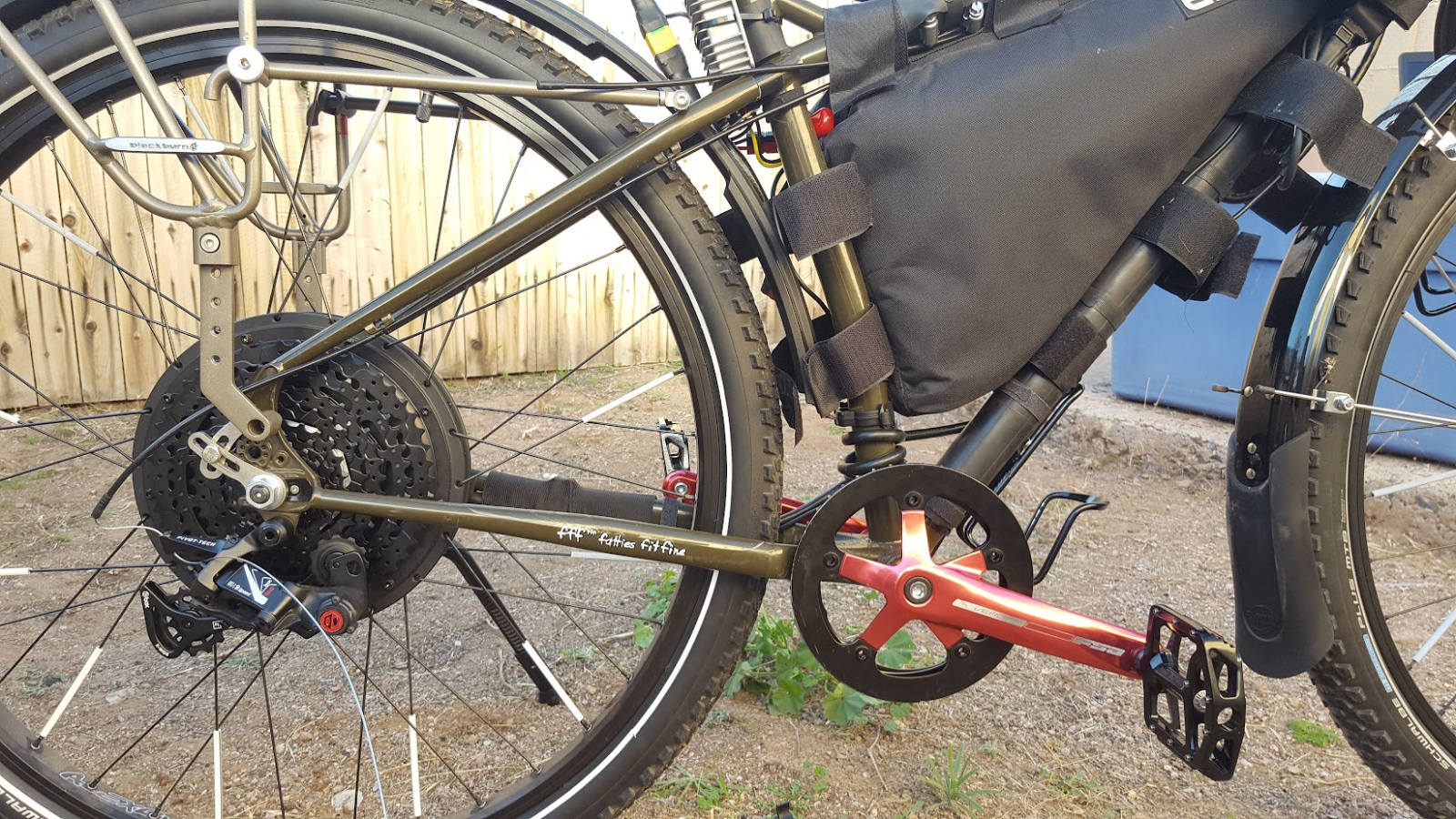
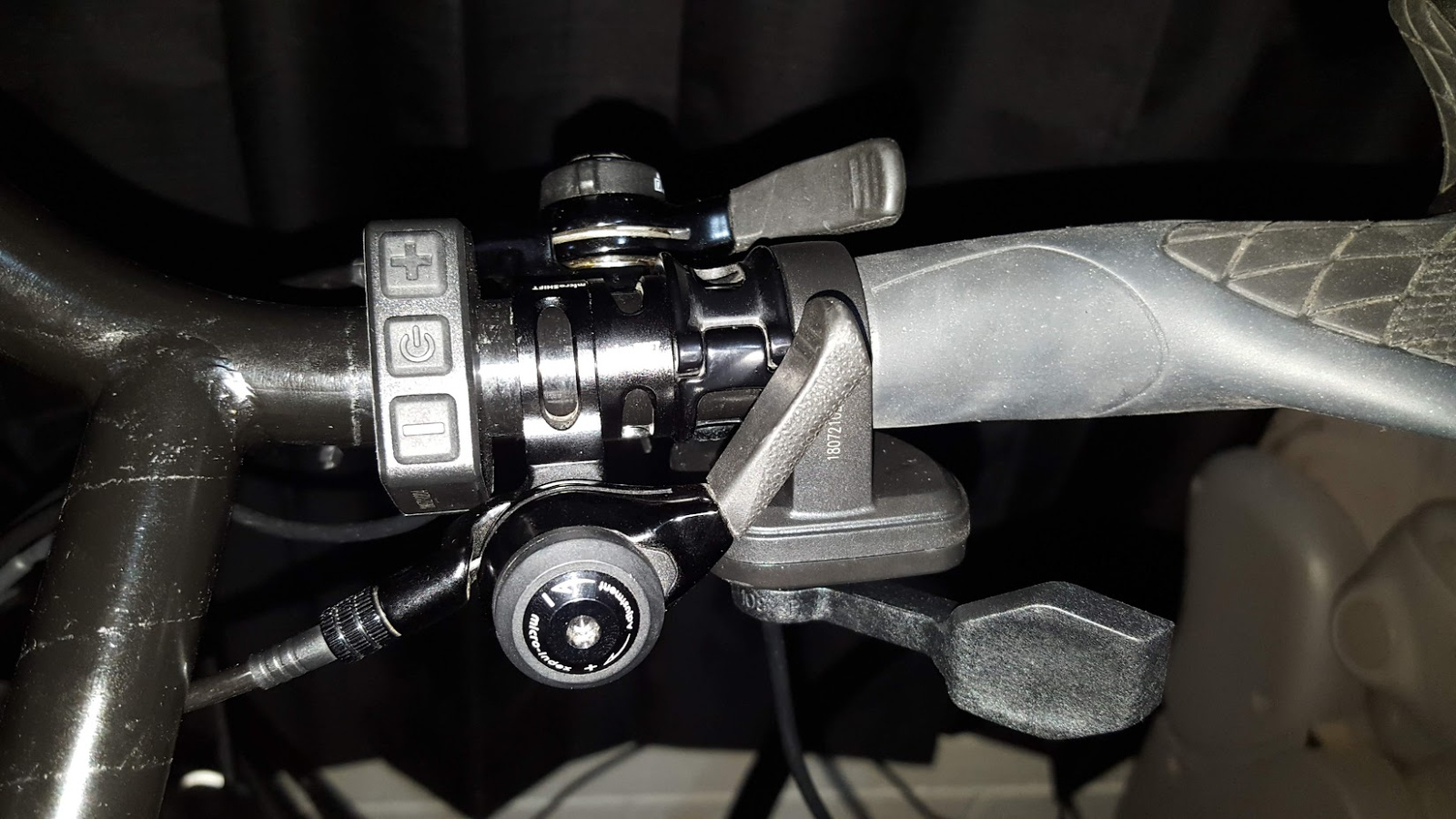
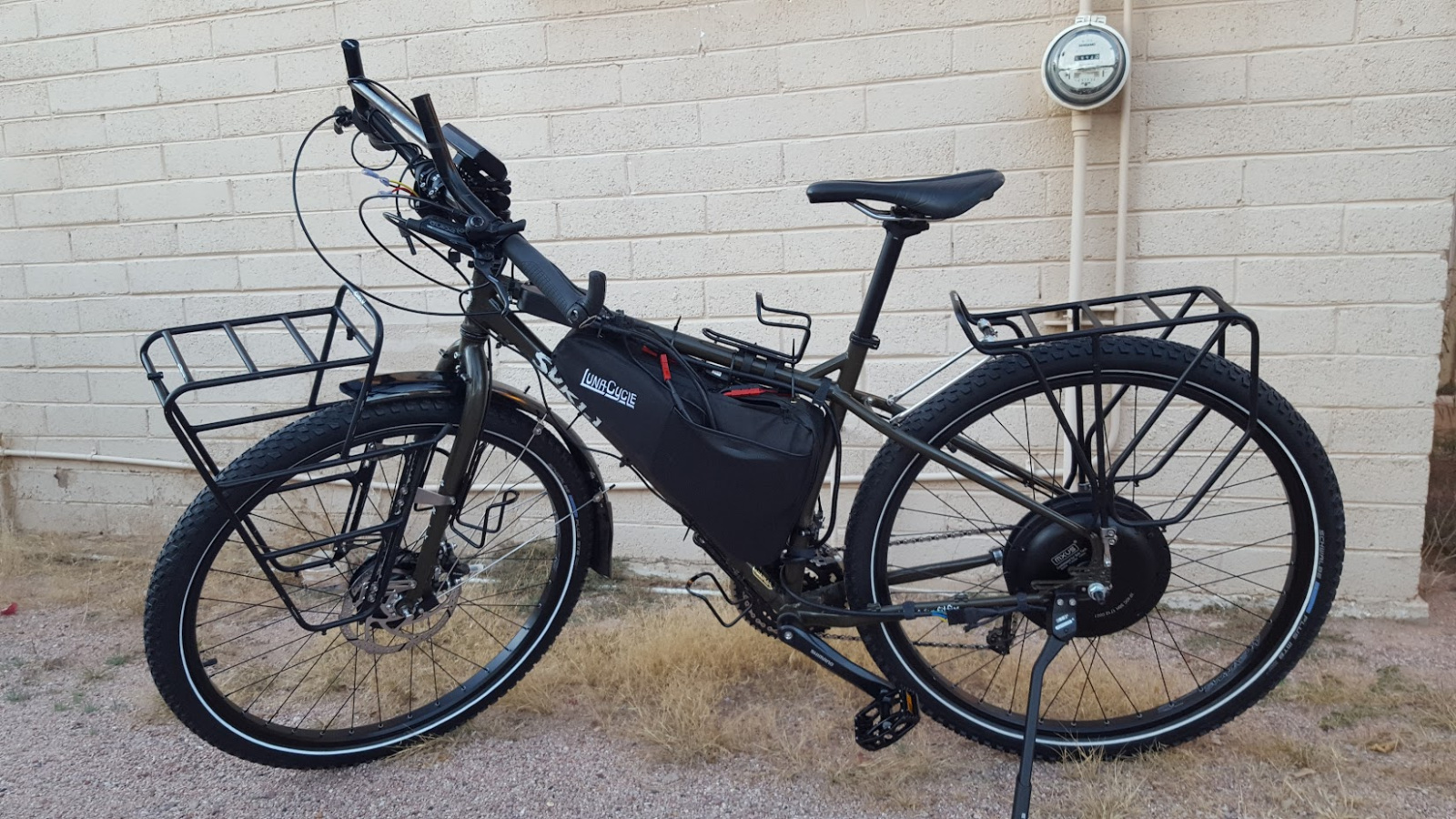
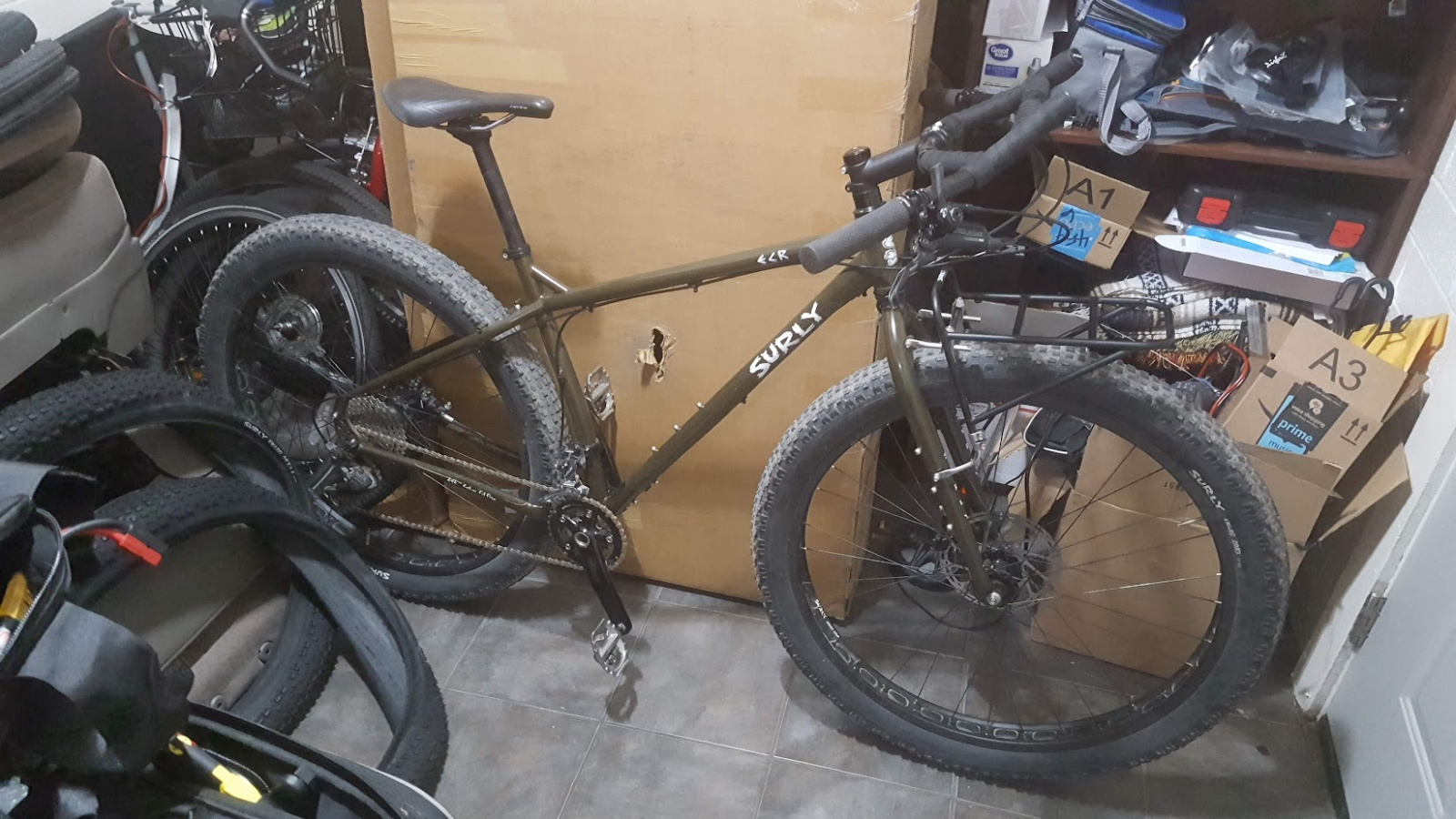
Why wouldn't I recommend this build to others?
Because it's basically a two-wheeled minivan, and when you boil it down like that, most people don't actually want it.
2WD is cool, but a) you probably won't even notice it's 2WD on your daily commutes, and b) most of the knee-jerk "I want 2WD" use cases are better served by a mid-drive. I'm happy I went 2WD, and I wouldn't swap to a different arrangement if given the chance, but for most it's a huge added expense for little to no benefit. Grin has a great video on the Pros and Cons of multi-motor setups that you should absolutely watch if you're considering one. They cover all of this far better than I would.
Extreme range and a near-total lack of range anxiety is awesome, but the side-effect of all these batteries is that my bike is very heavy in weird places. Removing any one of my three batteries, no matter which one, results in a bike that handles completely different. And better. My large triangle pack has more capacity than most people need, and I've got two more batteries besides. If you're not planning an extreme tour like I was or you're not actually riding e-bike Centuries, it's very silly and a huge waste of money to have all this battery on one bike. If you want high range with fewer compromises, I would sooner suggest optimizing for drag, with a more aerodynamic riding position, more efficient tires, and/or just riding slower.
If you want a build that does the same things my bike does day-to-day, just without the extremes, I'd sooner suggest a torque-sensing Grin All-Axle rear hub build with a single large-ish battery on a hardtail frame of your choice with a sturdy rear rack. You'll most likely come out WAY ahead on money, and you'll get a bike that is 90% as capable, more fun to ride, and less difficult to live with.
Do I regret it?
No!
My bike is ridiculous nonsense, but so am I.
Here's a story:
In 2019, not too long after getting The Kitchen Sink into its first road-ready configuration, I woke up one day at around 10AM, and decided that was the day I'd ride a mountainous ~150mi route that I'd had my eye on for a while.
A normal person would plan this out days or weeks in advance, would have their supplies laid out the night before, and would go over their bike and planned route with a fine-toothed comb before setting out at the crack of dawn. I did none of these things. I packed some random snacks, an assortment of tools, and a spare tube, and I grabbed some Subway before setting out on the longest most demanding ride of my life at, like, 1pm.
This trip, unsurprisingly, did not go as "planned." The bike, with its at-the-time tiny geared front hub, didn't handle the worst of the hills all that well. It climbed them, sure, but I had to stop several times to let the motors cool down. I only had two batteries at the time (hadn't bought the Shark pack yet), and in these conditions, even 100mi of range would have been wildly impressive. It was running on fumes at 80mi (~30mi of which was unpaved, and basically all of which was mountainous) when I rolled into a town in the middle of the night and found a hotel to sleep and charge at. They initially didn't want to let me bring my large, imposing, clearly DIY ebike into the hotel room, but thankfully allowed it after I explained my situation. The next morning I set off with a nearly full battery and completed my route, which included several tens of miles of sketchy mountain highway (including several near-continuous miles of regen braking for speed control) that I am content to fondly remember as a once-in-a-lifetime thrill.
This is the level of planning and execution that goes into most of my leisure rides, and The Kitchen Sink allows me to be this way. If I wake up in the morning and decide that I want to ride into the desert until there's no cellular reception and nobody around for miles, I can do it. If there's an 8 hour opening in my schedule and I want to spend that entire time on my bike, I can do it. If I just want to carry a frankly distressing quantity of energy drinks and Hot Pockets home from the Walmart 15 miles away from where I live, I can.
I don't have a car. I don't have public transit. I have The Kitchen Sink, and that's how I like it.
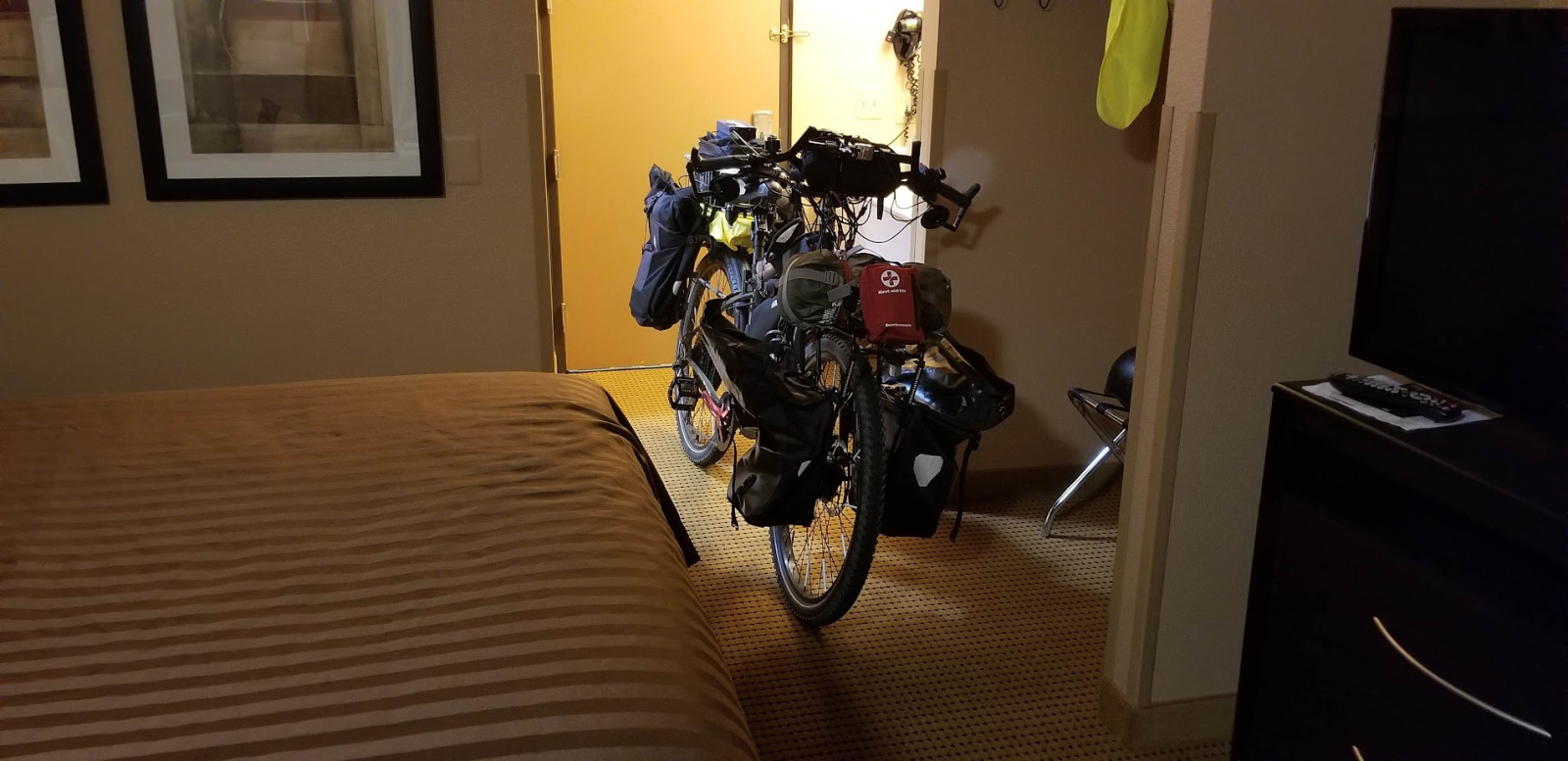
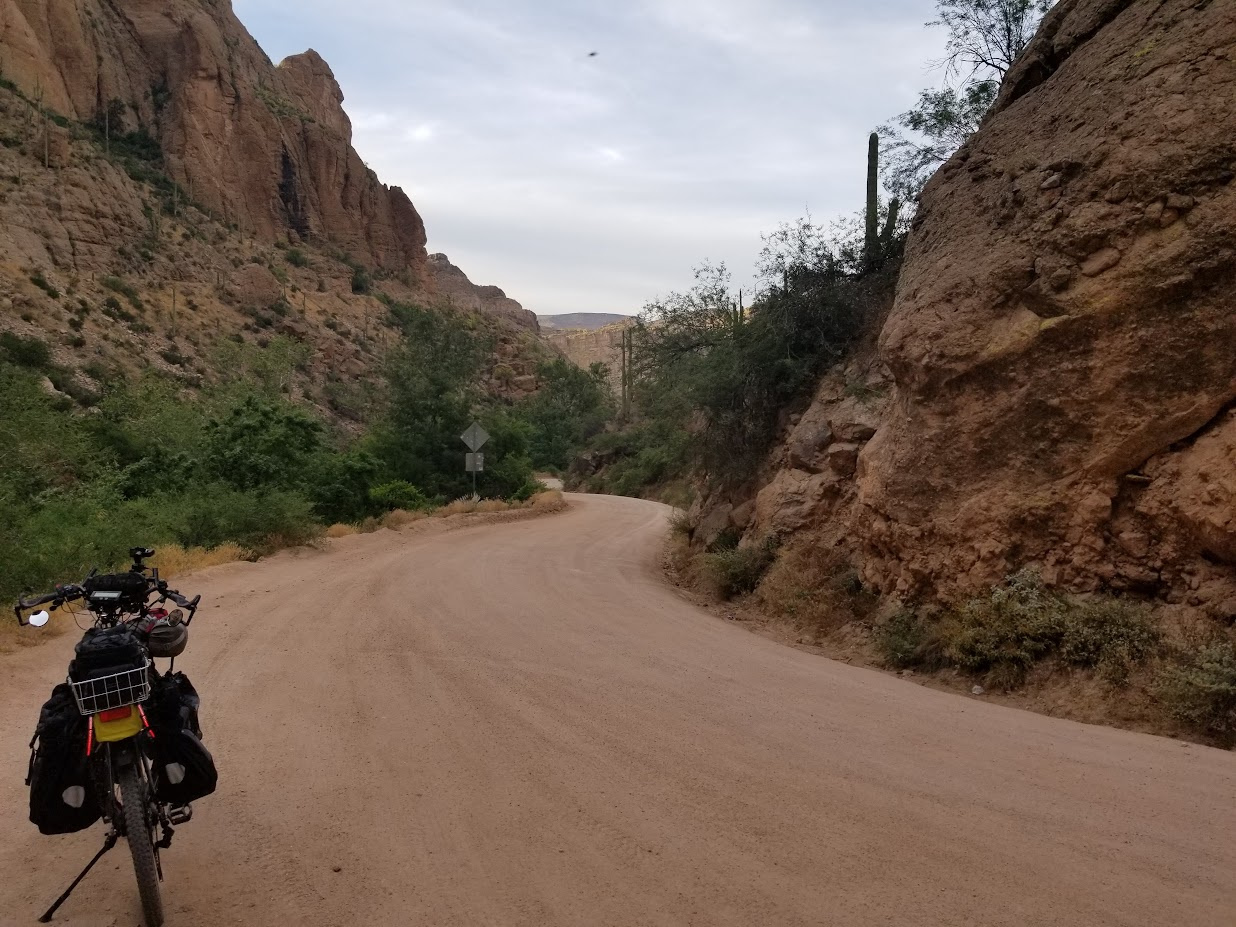



 Canadian
Canadian
